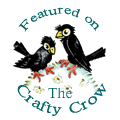So, while the children were napping, this afternoon, I soaked several sugar cubes in peppermint extract. I figured the alcohol in the extract would burn, and the peppermint oil would change the color of the flame from orange to blue - at least, all the fancy drinks, and dessert recipes, calling for peppermint schnapps, mentioned blue flames. (See the comments of this post, for a suggestion that is the alcohol in the extract, that turns the flame blue, and not the peppermint - on further reflection, I think that's probably correct - but the peppermint does add a refreshing aroma!)
 When the children were up, I gathered a lighter, a candle, a non-soaked sugar cube on a plate, one of the soaked sugar cubes on another plate, and my husband, to handle the actual job of lighting things. I stood back with the camera, and a pan lid on ready, just in case things got out of hand.
When the children were up, I gathered a lighter, a candle, a non-soaked sugar cube on a plate, one of the soaked sugar cubes on another plate, and my husband, to handle the actual job of lighting things. I stood back with the camera, and a pan lid on ready, just in case things got out of hand.First, we lit the candle, so the children could observe the regular color of the flame.
Then, we attempted to light the plain sugar cube, to show the children, that it would not light.

Finally, we lit the soaked cube. Actually, I should say we attempted to light the soaked cube, and learned a valuable lesson about evaporation. Apparently, all the alcohol had evaporated.

So, we doused the cube with a few fresh drops of peppermint extract, and lit it again.


The children enjoyed watching the resulting blue flame, and were surprised to see the side reaction going on - the sugar being caramelized.

 Being true scientists, they picked a volunteer to taste one of the remaining sugar cubes. It turns out, while most of the alcohol was gone, all of the peppermint remained. Think Altoids x 100. And yes, I tried one too :)
Being true scientists, they picked a volunteer to taste one of the remaining sugar cubes. It turns out, while most of the alcohol was gone, all of the peppermint remained. Think Altoids x 100. And yes, I tried one too :)They also tasted the brown bits of caramelized sugar from the plate, and discovered delicious, candy cane goodness.
Finally, after noticing the peppermint extract that spilled onto the plate, burned really well too, they wanted to know if it would also burn on top of a bowl of water.

 But, even though we could see the peppermint oil floating on top of the water, it would not burn. I guess, that goes down as an experiment in mixing solutions. Apparently, alcohol and water will mix, or maybe the small amount of alcohol in the extract dissipated too quickly. At any rate, it was quite interesting, and now the house smells truly Christmasy!
But, even though we could see the peppermint oil floating on top of the water, it would not burn. I guess, that goes down as an experiment in mixing solutions. Apparently, alcohol and water will mix, or maybe the small amount of alcohol in the extract dissipated too quickly. At any rate, it was quite interesting, and now the house smells truly Christmasy!For more fun with science, check out the other links at this weeks Science Sunday, at Adventures in Mommydom.
It's great to be a homeschooler.




4 comments:
What a very fun experiment. I bet your kids LOVED it. I have to go find peppermint extract now.
Very fun! I don't think my son is quiet ready for this one, but I am certainly going to "archive" the idea for the future!
This is a really fun experiment. I think blue flames are caused by alcohol, not by peppermint itself. I hope kiddos understand that experiments with fire is a big no-no without parents present.
After looking into to it a little more, I think you might be right about the alcohol, and added a little note in the post above - thanks for the heads up!
And yes, the children are very aware, that playing with fire themselves is not safe (the fact, that I stood waaaaay back when their father lit the flame, was probably a pretty good reinforcement too.) ;)
Post a Comment